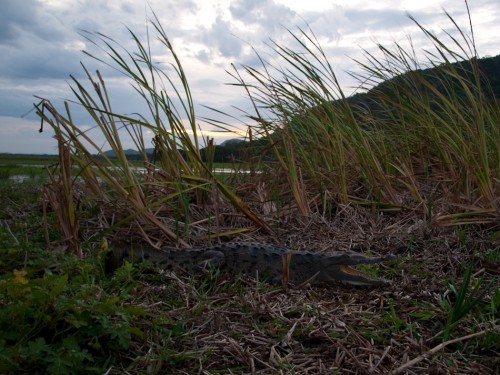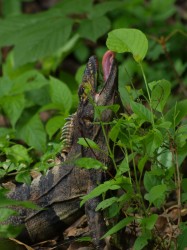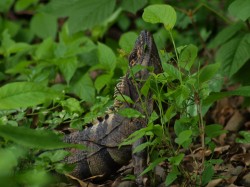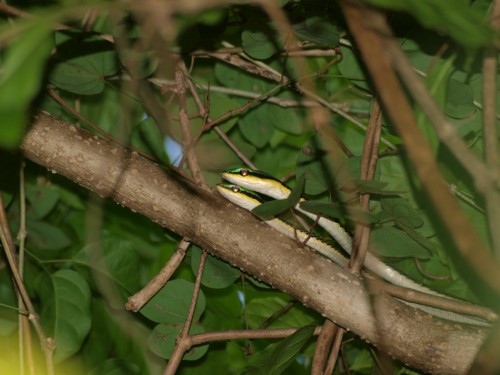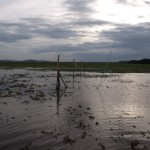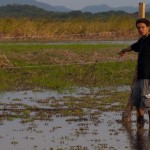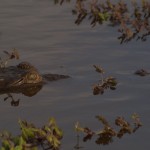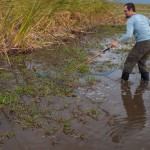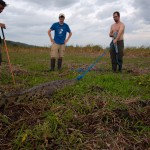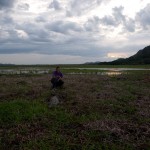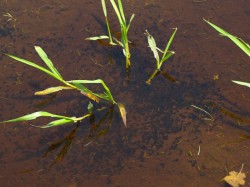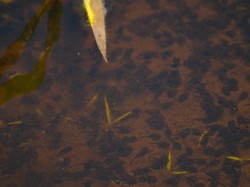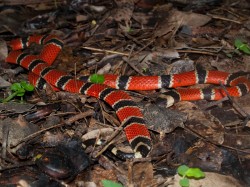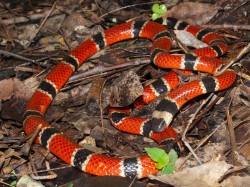Boa and I made an attempt to catch one of about 10 baby pisotes (coati) that we discovered in the forest. We weren’t smart enough to capture them. 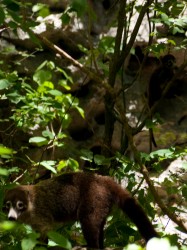
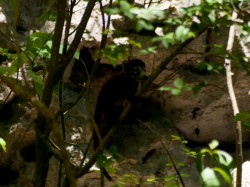 There home appearred to be a cave nearby and there were three adults around them.
There home appearred to be a cave nearby and there were three adults around them.
Tag Archives: Animals
Two large Iguanid juveniles
There is an abundance of both Green Iguana (Iguana iguana) and Black Iguana (Ctenosaura similis) juveniles about the station. These two species are the largest terrestrial lizards around here, although the ctenosaur is much more abundant in the dry forest. I’ve only seen two green iguanas, both of which were larger than the largest ctenosaur around the station. Obviously, though, they are reproducing…
The ctenosaur juveniles are around every corner, and Charles witnessed two being consumed by Turquoise-browed motmots.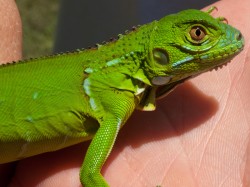
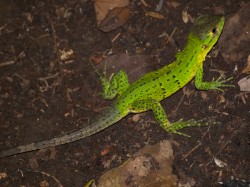
Another complicated picture
Again, while photographing plants for a personal identification guide, I noticed there is much more going on in the photograph than plant identification.
I wonder what these flies are doing on this Echinodorus paniculatus flower. There is a pair for each petal; are they a breeding pair? If so, will they lay eggs and form a gull or otherwise use the Echinodorus has habitat/food? Are they simply attracted to the white?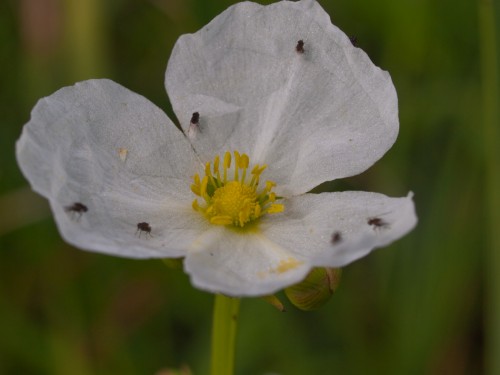
Angry crocodile
Hungry, Hungry Ctenosaura
Leptophis Action
In one day, I was able to observe a pair of mating parrot snakes and a parrot snake preying on Lithobates (Rana) forreri. As a disclaimer, the frog was tossed toward the snake out of curiosity by another student here, Paul, so it wasn’t a ‘real’ predation event. Mahmood, however, suggested that this species of snake hunts for frogs, such as L. forreri, in the leaf litter during the day, while the frogs are inactive.
 |
 |
A finished fence and a crocodile
After completing a fence to keep out the damn cows, Boa and I discovered that a 2-m crocodile had come to investigate. The water is still very shallow, so it didn’t make an attempt to get away… that is, until we decided to strap a rope around it’s jaw and wrangle it to the shore.
Charles is shown stringing the crocodile’s jaw and Paul is the other individual celebrating the catch.
Patches of Tadpoles
What could be controlling the patchiness of tadpole density in the wetland? There are areas, such as those pictured below, where tadpole congregate in large numbers and appear to move about as a school. In a couple of cases, I notice one or two dead tadpoles being cannibalized in the mass, but here there was no obvious food source that had attracted them. In the surrounding area (maybe within a 5 m radius), there were very few tadpoles; 2-3 per sqaure meter.
On a related note, how can I measure tadpole density?
Another Coral Snake
Mabuya
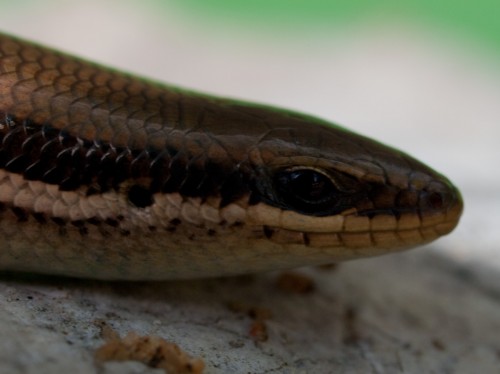 The bronze-backed climbing skink is in a pretty cool sounding genus: Mabuya. Incidently, it appears to be one of the only genera that has remained stable since Savage’s 2002 Herps of CR book. Many other genera have changed since and are published in Savage and Bolanos 2009 Zootaxa.
The bronze-backed climbing skink is in a pretty cool sounding genus: Mabuya. Incidently, it appears to be one of the only genera that has remained stable since Savage’s 2002 Herps of CR book. Many other genera have changed since and are published in Savage and Bolanos 2009 Zootaxa.

